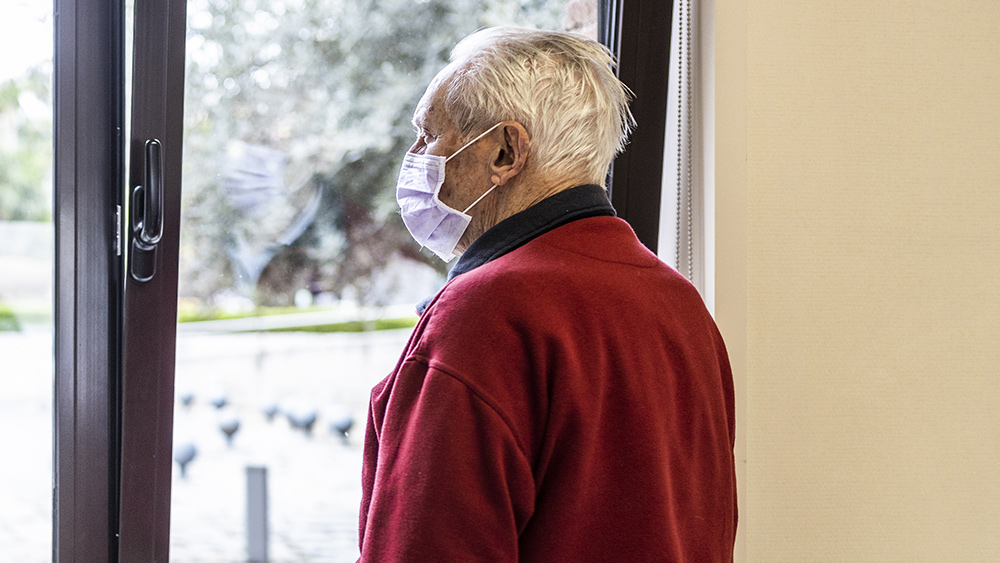15% of Americans don’t understand why they must STAY HOME during the coronavirus epidemic
04/11/2020 / By Arsenio Toledo

A survey has found that 15 percent of the U.S. population still don’t understand why they should be staying home as the coronavirus outbreak spreads through the country. This survey comes as a surprise, especially now that about 95 percent of Americans have been ordered to stay home.
California was the first state to issue a lockdown order on March 19. Since then, 41 other states, Washington, D.C., and the American territories of Puerto Rico and Guam have also issued stay-at-home directives, ordering residents to go out only for essential activities, such as buying groceries and medicine. However, a large percentage of people still don’t understand the importance of social distancing in the fight against COVID-19. (Related: Isolation, quarantine and social distancing: Practice these essential strategies to stop the spread of coronavirus.)
Miscommunication throughout the country
Wired’s chief of research Thomas Goetz, with the help of his colleague Matt Mohebbi, conducted an online survey from March 22 to April 5, asking over 100,000 people across all 50 states this question:
“Do you live in an area that is currently under a stay-at-home order due to the pandemic?”
Respondents are given three options for an answer: “Yes,” “No” or “I don’t know.” The results showed that significant parts of the population do not fully understand their quarantine and lockdown policies.
In Arkansas, which still has not issued any stay-at-home orders, more than 60 percent of respondents answered either “Yes” or “I don’t know;” in Utah, which only has county-level shelter-in-place orders, nearly half didn’t answer correctly. Similar levels have been seen in other states such as Wyoming, South Carolina, Missouri and Alabama.
In both Texas and New York, around 25 percent of respondents did not fully understand their states’ directives, despite Texas Governor Gregg Abbott and New York Governor Andrew Cuomo getting a lot of media attention for their handling of the coronavirus.
The states with the lowest rate of confusion still showed a significant proportion of respondents who don’t understand their states’ stay-at-home messages: 15 percent of the respondents from Illinois, Colorado and California; and 13 percent of the respondents from Michigan, where the lowest rate of confusion has been recorded.
The nationwide average is about 25 percent.
Stay-at-home orders not a priority for many Americans
In their analysis, Goetz and Mohebbi conclude that these numbers may be influenced by the fact that many people have been hearing “muddled and contradictory messages,” either from the President, their governors and state officials, their favorite news outlets and even from well-meaning friends and relatives who may be sharing fake information on social media websites.
However, Goetz and Mohebbi are quick to note that many of these “low-information people” are also probably economically struggling, meaning they are less likely to have decent access to health care and higher education resources.
This is becoming a reality for even more Americans. In the past three weeks, over 16.8 million Americans have lost their jobs and filed for unemployment claims due to the coronavirus crisis shuttering economic activity.
As the COVID-19 pandemic places more lower-income people in jeopardy, Goetz and Mohebbi argue that many people are just too busy worrying about their incomes and their families. According to them, respondents might be focusing on their own well-beings and on figuring out where their next meal would be coming from. Details of their state or county’s stay-at-home orders may not be a priority for them right now.
Get the latest updates on the coronavirus crisis in the U.S. and around the world at Pandemic.news.
Sources include:
Tagged Under: America, coronavirus, covid-19, Flu, government, infections, isolation, lockdown, outbreak, pandemic, Public Health, quarantine, self-isolation, self-monitoring, social distancing, stay home, stay-at-home orders, superbugs, United States, USA, virus



















